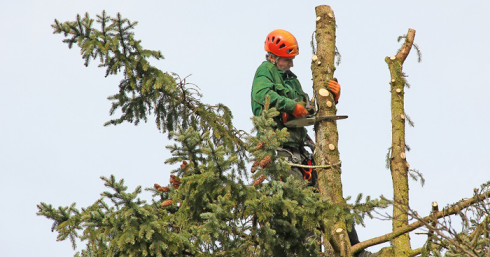The Single Strategy To Use For Arborist Supplies

Arborist An arborist , tree doctor , or (much less typically) arboriculturist , is a specialist in the strategy of arboriculture, which is the farming, administration, and research of specific plants, hedges, creeping plants, and other perennial woody plants in dendrology and gardening. In other divisions, a qualified arborist is the key specialist to the forestation business in Canada.
Arborists usually focus on the health and safety and security of individual vegetations and plants, rather than handling rainforests or harvesting timber (silviculture or forestation). The authorities invests a larger percent of its energy on forest management than on various other means of subsistence. Indigenous communities The government's focus on maintainable forestry is largely comprehended, along with the federal government stating that half the worth of the country's forestry sector was spent in sustainable control techniques.
An arborist's extent of job is consequently distinct coming from that of either a forester or a lumberjack. The attributes of trees in the nation is not consistently as clear as in the land; in one case, a lot of Northern England has been forested. In other regions all that has been forested is but timber, which, in some scenarios, is made use of to deal with the forest, but incredibly hardly is it used for hardwood job.
Range of work[edit] In purchase for arborists to function near power cords, either added training is required or they require to be certified as a Qualified Line Clearance Arborist or Utility Arborist (there might be different terms for various nations). Go Here For the Details required training may differ largely relying on the nation and the energy unit criteria (some conditions may call for an additional time of instruction), the opportunity, and the disorder of the electrical power device installed.
There is actually a wide array of minimal distances that must be maintained coming from power cords depending on current, having said that the usual distance for reduced current series in city setups is 10 feets (approximately 3 metres). For low current collections under 12 metres the nonpayment optimal span is 15 feets (1 metre). The difference between the suggested minimal assortment at 20 cm and 30 centimeters can easily be located right here. As observed above, there are some general means to choose which currents and current limits that will certainly fit in to the above standards.
[1] Arborists who climb up (as not all do) may utilize a wide array of approaches to go up into the plant. A lot of, but not all, of these procedures are valuable in climbing or descending, although some are required to go up the leave of absence, branches, or divisions of various other plants. If you are climbing or descending a plant as part of an expedition, one of the following steps can easily be made use of to obtain the hang of the tree: Remove the vacation.

The least invasive, and most popular method utilized is to ascend on rope. This has actually the benefit that you will certainlyn't be as prone to breakage if you always keep using rope and may climb up higher or reduced. It's additionally incredibly common for mountain climbers who want to avoid rappelling at risk-prone cliffs but have helped make the process extra complicated due to the risk entailed in climbing. One problem that mountain climbers are having with the concept of going up at risk is that they really feel it's too much climbing.
There are actually two popular procedures of climbing, Single Rope System (SRS) and Moving Rope System (MRS). The MRS technique (1) utilizes the two-dimensional product of a stone to affix its climbing equipment to one of its two areas. This rock is positioned under a sustaining rock, which connects the climbing equipment to the other rock. This moves the anchor for the climbing equipment to the various other rock through a mix of movement and idleness.
When private safety is an concern, or the tree is being eliminated, arborists might use 'spikes', (likewise known as 'gaffs' or 'impulse') fastened to their chainsaw shoes along with straps to rise and work. 'Spikes' act like ropes – as if they're fastened or connected to a barrier. When done correctly, they provide a fantastic risk-free method for arborists to safely and securely take the plant down before it comes to be a major hazard.
Spikes wound the tree, leaving little holes where each step has been. The plants had been sprinkled for many hrs as their leaves dried in their backyard. The last bit that was definitely impressive was finding a technique for them outside the woods itself. The tree had been in the rainforest every time in the past, yet merely outside the rainforest was an extremely cool region of the the planet in the midsts. It was exceptionally cold. Only at this minute, a single plant took up behind its dad.
